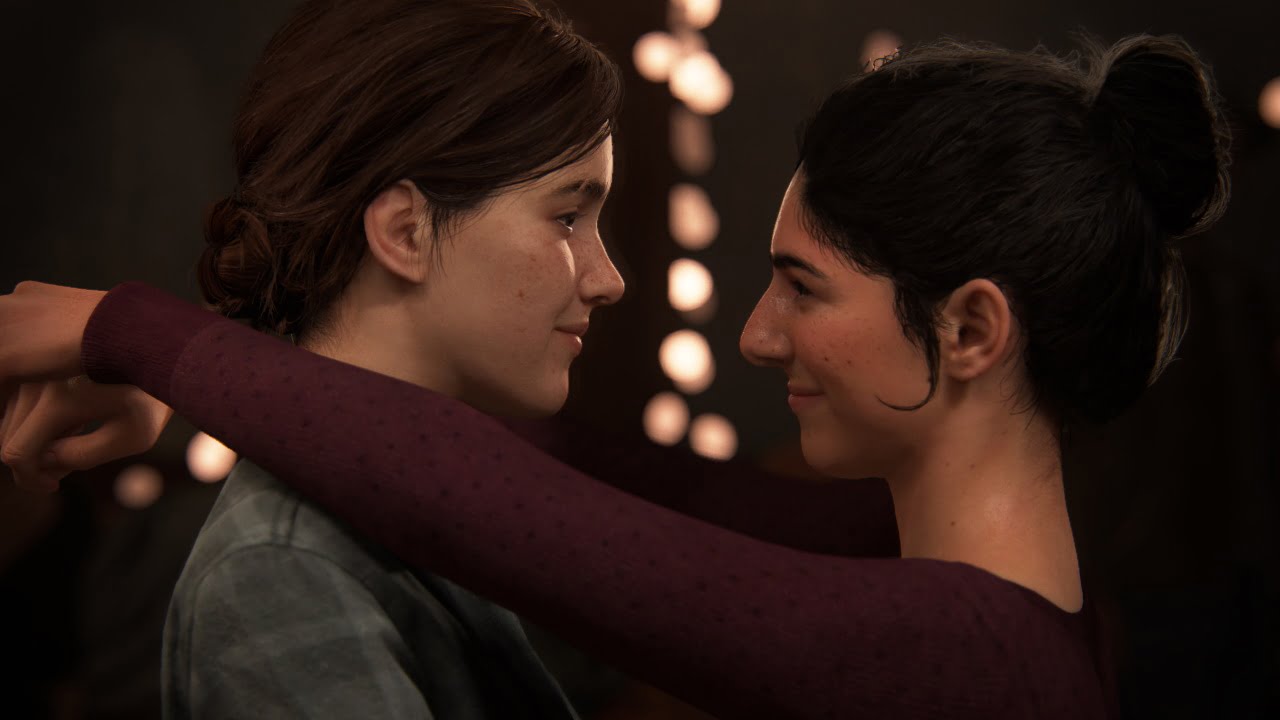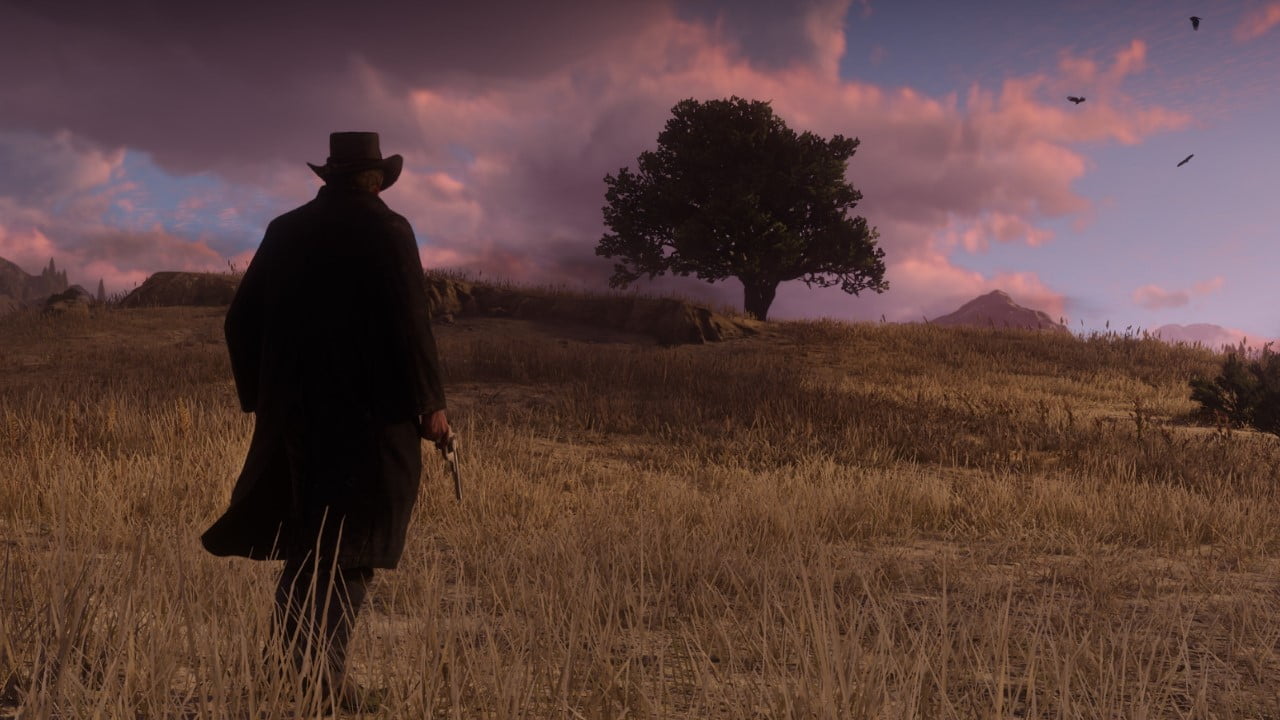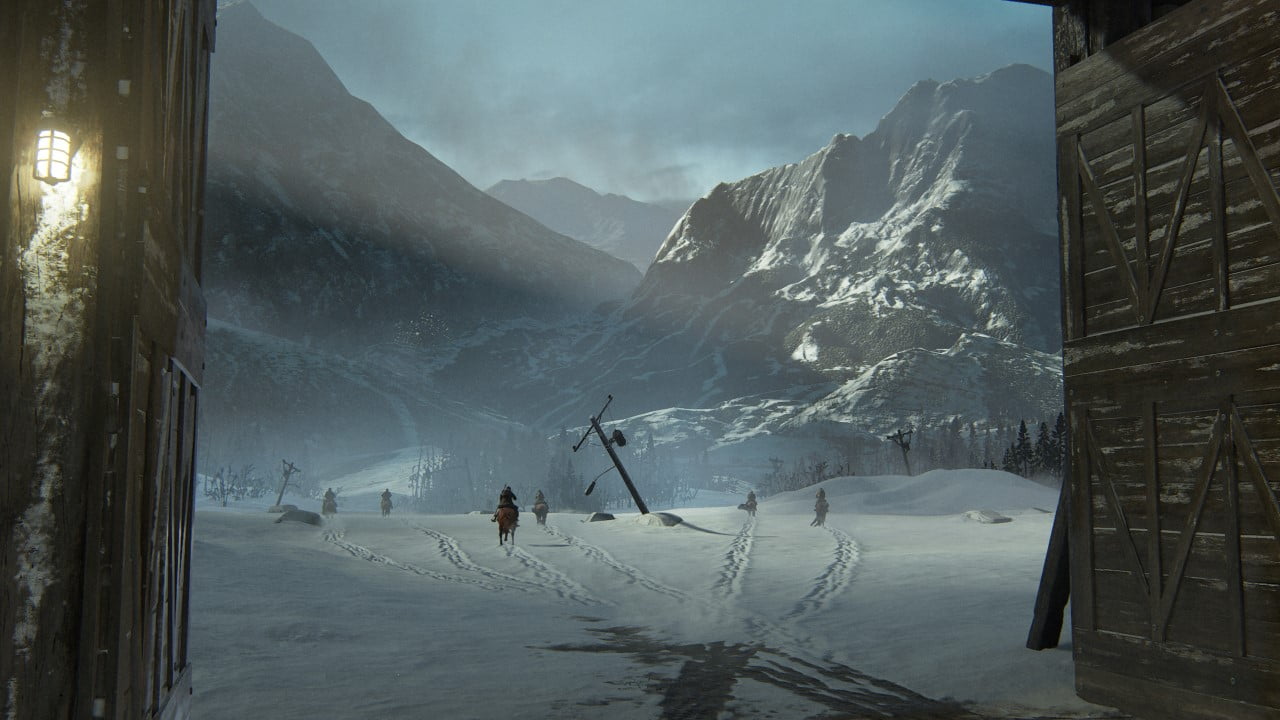Are AAA video games – like The Last of Us Part II – right to model themselves on prestige TV, or will they be forever chasing maturity and legitimacy?
Warning! The following article contains serious spoilers for the following video games and TV shows:
- The Last of Us Part II
- Red Dead Redemption II
- Game of Thrones
- Breaking Bad
- The Walking Dead
- Westworld
First, a very extended metaphor
Imagine, for a moment, a wedding. You’ve almost certainly attended at least one in your life. Perhaps you’ve even planned one? If you have, then you understand the sort of cerebral gymnastics required to make a table plan work.
You have to figure out how to get dozens, possibly hundreds of people into a room together. Some of those people are alone, others have partners, some have children. For some arbitrary reason, you have to alternate seating by gender. (No, we don’t know why. It’s a whole thing, though.)
To do this you need to fill round tables of around 10 people per table. Sometimes more, sometimes less. You are responsible for making sure that everyone has a good time based on who they’re sitting with but – more importantly – that they get along. You can’t sit those two on the same table because they used to date and it’ll be awkward. Those two families don’t get along so, not only can they not be on the same table, they need to be at opposite ends of the room. Grandpa can’t sit with, well, anyone remotely different because he’s racist and homophobic.

It’s like that fox-chicken-bag-of-grain brainteaser, but you have a hundred variables to juggle and, unfortunately, everybody has to stay in the boat. The only universal variable is that nobody wants to sit with children. They certainly don’t want to sit with anyone else’s and, often, they don’t want to sit with their own. Going to a wedding is a chance to dress nicely and drink and dance and just not be a parent for a few hours.
So the solution is obvious: You have a kiddies table. Aside from the “top table” rules, it’s one of the only universal things about wedding seating plans. But then you end up with a new problem: What about the “older” kids, the teenagers and such? It’s unfair to sit them with the toddlers, but the grown-ups don’t want them at their table, either.
Now imagine that the entertainment industries are planning a wedding. Maybe TV and Cinema can sit together, but they won’t want to sit with Netflix. They hate each other. The Music Industry has the same beef with Spotify, so we’ll put the streaming services together on one table. We’ll sit the Authors and Poets and Artists together because they have lots in common, while the other entertainment industries might find them a bit boring and pretentious. Musical Theatre gets along with everyone but they’re really loud, so keep them away from the top table.
That all seems to be going fairly well until we get to Video Games. All the other entertainment industries would like to sit Video Games on the kiddies table, with Cartoons and Comic Books and Wrestling and Tik Tok. But in this (very laboured, thank you for sticking with it so far) analogy, Video Games is a teenager. While the other, older, more-established industries still see it as a child and they don’t want to sit with it, Video Games earns a lot of money, is more mature than its detractors give it credit for, and believes it should get to sit with the adults.
As a result, Video Games starts being demonstrative. It goes to great pains to prove how mature it is to everyone else. Sometimes it acts out and has tantrums when it feels it isn’t getting the respect it deserves. It is a mature medium and it wants to be treated like one.
It tries to demonstrate it is as mature as its older siblings, Cinema and Television. And that’s where the problems come in.
Cinema sins
For years, the video game industry has been copying cinema. Rockstar simulates Scorsese. Kojima cribs Cameron and Carpenter. Remedy lifts Lynch. We used to have a weekly column about it, that only ended because the writer took another job elsewhere. Even now, two years on, we’d be finding new examples every single week were he still with us. (You should read it, it’s really good.)
But as games have grown in scope, so too has their graphical fidelity. Take The Oregon Trail and Red Dead Redemption 2 as a for-instance. Both games feature a group of settlers in the Old West, looking for a safe place to call home. Both games have a strong narrative core with a morality-versus-necessity theme and a decision-making component. Both games involve struggles with food, money, health, death and, yes, violence.
But where The Oregon Trail was a text-only adventure when it was first developed in 1971 – the graphics were added to the Apple II port of 1985 – Red Dead Redemption 2 is a cinematic monster, a sprawling spaghetti western that rides on the coattails of John Ford, Sergio Leone and Sam Peckinpah. Particularly Peckinpah, whose stories eschew the black and white hats of old for a distinctly greyer roster of antiheroes and sympathetic villains. They tug at the thin line of conflict between values and ideals, something Arthur Morgan struggles with in the wake of Dutch’s drive for “freedom”, leading to an ever-escalating cycle of violence, loss and, ultimately, futility. They called Peckinpah “Bloody Sam” after his – for the time – extreme violence; it’s no surprise a Rockstar western follows his fierce and fearsome formula.

But Red Dead Redemption 2’s metronomic violence, interspersed with treacle-slow travel through painterly landscapes, is as much a sign of the creative times as of the classic films it clearly idolises and lovingly imitates. Far removed from the impish Bully or the vaseline-smeared stylisation of Vice City and San Andreas, this is a game that was born of Grand Theft Auto V, of Trevor’s nihilism and brutality, and that torture sequence. It was around the same time that prestige television changed tack, too, from the likes of Six Feet Under, The West Wing and Mad Men to Breaking Bad, Westworld, The Walking Dead and, of course, Game of Thrones. These shows still allow themselves to burn slow like their forebears, ponderous even, but when the moment comes? Holy shit, it comes.
Which brings us neatly onto the current discourse, the video game that is trying so hard to prove its maturity, and the one that everyone is tearing strips off one another over on social media: The Last of Us Part II.
Kill your darlings
I’m not going to lie: I didn’t sleep well after I played the opening few hours of The Last of Us Part II. Like Ellie throughout the course of the game, I was haunted by the sights and sounds of Joel’s horrific, violent death. The abrupt shotgun kneecapping. The repeated torture with the golf club. His screams from down the hall, Ellie howling at him to get up. The gruesome final blow.
It’s a sequence straight out of Benioff and Weiss’ playbook, a blueprint for Game of Thrones moulded into something new and interactive, yet painfully familiar. Meanwhile, the precise manner of his death – with sporting equipment as a weapon and his face bloodied, contorted and crushed – is almost a carbon copy of Glenn Rhee’s baseball bat brutalisation in The Walking Dead.
Picture the hollow, numbing inevitability of Ned Stark’s beheading. Mix in the raw, unkempt violence of Oberyn Martell’s death at the hands of The Mountain. The guttural, bone-chilling shock of the Red Wedding, the brutality of the attack on Talisa Stark’s unborn baby and the callousness of what followed. The senseless death of Shireen Baratheon on the funeral pyre, which served no one and changed nothing, the poster child for the futility of violence.
All of these things, like the death of Joel, were shocking and violent in the extreme. They also all kept me awake at night, unable to shake them from my consciousness, unable to escape them as I slept. You might argue that the fact I couldn’t sleep meant the scene did its job, to shock, to horrify. I would counter that I need all the sleep I can get, thanks.
I won’t argue that the death of Joel was uncalled for, that the story played out in The Last of Us Part II somehow disrespected a beloved character. It’s not my place to second-guess another writer. It is certainly not the place of fandom, no matter how fervent their belief that they somehow own or control these characters, these stories. Down that road, madness lies; just ask Mass Effect or, more recently, Star Wars. (Though I might caution writers in general that the answer to the question, “why do you keep fridging female characters?” is not simply to fridge male characters in their stead.)
But the manner in which Joel was killed? The viciousness, the specificity, the graphicness of it? Given that it’s giving me nightmares, that might just have been overkill.
What else could they do?
The primary argument in favour of the violence in The Last of Us Part II – because let’s remember, it’s not just the violence against Joel; that’s merely the start of it – is that it serves as motivation for the player. That they need the initial shock as impetus, then repeat exposure to violent stimulus to keep the momentum going, to keep driving you forward on your search for reprisal. You can almost set your watch by it. After a certain amount of slow-burn time passes you’ll either run into something horrific done by someone else, or be forced to do something horrific yourself to progress the story.
(And don’t even get me started on the ludonarrative dissonance of it all. In spite of all its efforts to motivate the player through and into violence, Naughty Dog is well aware that players might have bailed out at various opportunities for the safety and sanity of Ellie and her loved ones, and takes that option off the table entirely at every turn. But that’s a discussion for another day.)

This conveyor belt of violence and reprisal is another trick utilised in Game of Thrones, where Arya Stark’s arc follows a remarkably similar path to Ellie’s in The Last of Us Part II. After the brutal death of her father, she travels halfway across the continent several times, with a list of people to exact her vengeance upon and a small sword with which to do it. Or in Ellie’s case: After the brutal death of her father figure, she travels halfway across the continent several times, with a list of people to exact her vengeance upon and a small flick knife with which to do it. The Last of Us Part II even features an awkward, somewhat aggressive sex scene; another Game of Thrones staple that’s carried over in video game form.
But you don’t have to be as explicitly violent (or violently explicit) as Game of Thrones to get your point across, to shock your audience and motivate both them and your characters for retribution.
Breaking Bad was filled with many brutal deaths, including the decapitation of Tortuga, the explosive mutilation of Gus Fring, and the box-cutter and bathtub incidents, but it was the sudden murder of Jesse’s girlfriend Andrea Cantillo and the long-foreshadowed (but still shocking that it actually happened) killing of brother-in-law DEA agent Hank Schrader – both at the hands of the neo-nazi gang that takes over the blue meth operation – that serve as the biggest motivators for Jesse Pinkman and Walter White respectively. Neither is gory or explicit, like the majority of the “motivational” deaths in Game of Thrones or The Last of Us Part II. Both are just excruciatingly sad. But both hurt just that little bit more than all the others and are upsetting enough to serve as a driver for the narrative, the characters, and the audience.
The same is true of The Walking Dead, which is filled with too many gruesome and explicit deaths to recount, but it is the quiet ones – the loss of Sophia, of Lizzie and Mika, of Dale Horvath, of Merle Dixon, of Beth, of Siddiq – that hurt the most. In Westworld, where beloved characters can be violently raped and murdered over and over for the entertainment of its patrons, the sudden execution of Dr Robert Ford or the desperately sad (5748th) death of Teddy at the hand of Dolores or the cold obsoletion of Maeve carry more weight than the others combined. Even Bernard Lowe finding out his true origin was more devastating than the countless violent deaths in the park.
You can cry “motivation” as much as you like, then, but the mature themes in The Last of Us Part II – and video games in general – are as much about pursuing prestige TV, about legitimising that claim that video games are a “mature” form of entertainment by brimming them with “mature” content. Even now, with an enormous audience and countless revenue, video games are still determined to prove that they no longer deserve a seat at the kiddies table of the entertainment world.
But there’s a danger in aggressively pursuing that agenda, in protesting too much your legitimacy, your maturity. The teenager at the wedding, angry and hurt by not being seated with the grown-ups lashes out, looking more childish than ever. And when you draw attention to it, with top-of-your-voice arguments trying to counter accusations of immaturity, you just end up proving them right. It’s a zero-sum game, the Streisand Effect at work and, quite frankly, it is very effective at making you look foolish in this specific scenario.
The actions of a mature medium
So where do we go from here, then? The way I see it, there are two options:
The most mature course of action would be for the video game industry to stop focusing on what cinema and TV are doing, trying to legitimise itself by their standards, and focus on what it does best – innovation and interactivity. After all, as a wise friend and former colleague once told me, “the medium is not the message”.
The other option? If we must mimic movies or parrot prestige TV, if there is genuinely no other way to legitimise ourselves amongst the “grown-up” mediums and get off the kiddies table, can I suggest, for the love of everything we hold dear, can we start watching some different shows?

Imagine how much more “grown-up” video games would seem if they stopped being preoccupied with being “mature”; if instead of Game of Thrones or The Walking Dead they put The Leftovers or Chernobyl or Russian Doll on a pedestal? There’s still plenty of room for murder (Killing Eve) or violent uprising (The Man in the High Castle) or oppression (The Handmaid’s Tale) or adult themes (Sex Education) or misery (Fortitude) or mystery (Dark) or all of the above (in HBO’s Watchmen). But the point is, there are options. There are other ways this can go. Exercise a little choice and agency and discretion, for once, instead of just banging on about it as a sales technique.
As for me? Ellie may have finally exorcised her demons in The Last of Us Part II – by the end, at great personal cost – and she can remember Joel in life again, rather than being tormented by him, twisted in death. I only wish I could say the same.
Enjoyed this long read? Support Thumbsticks on Patreon to enable more of it.






